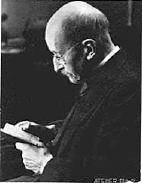
Home

WarmUp

What is Physics Good
For?

Puzzle

Lab Prep

Course Information

Communications
|
 |

|
 |
Now this is not the end. It is not even the
beginning of the end. but it is, perhaps, the
end of the beginning.
 --
Winston Churchill --
Winston Churchill
|
Course Announcements -
4/23/01
- We are entering the home stretch of
251. The final exam will occur Wednesday of
next week (5/2/01).
-
Evaluate your Prof's! We will be doing
the standard faculty evaluation forms
according to this schedule:
- Tuesday, 4/24/01, Evaluation of Dr.
Wassall
- Wednesday, 4/25/01, Evaluation of
Dr. Gavrin
- A
sample final exam is available. I will
discuss the sample final on monday,
4/30/01.
- The final formula
sheet is also ready.
- The results of the final exam and the
course grades will be posted here and on
the credit check page in the on Thursday,
5/3/01.
- Don't forget the post-251 pizza party
in the lab at 12:30 on Thursday,
5/3/01.
- You can now check your credit, as of 3 PM
4/22/01.
- The last online assignments have been
posted. There is a WarmUp due Wednesday
(4/25/01) a Puzzle due Friday (4/27/01),
and a Good For due next Monday
(4/30/01).
- Here are a few hints for doing well
in Physics 251.
|
Other News
- The Space Shuttle Endeavor is currently
in orbit, docked with the International
Space Station. Its primary mission is to
install the Canadarm2 (AKA the "Space
Station Remote Manipulator System," or
SSRMS). A Canadian-built robot arm that
will be an important piece of the space
station's operations. The arm is an
extraordinary piece of engineering, capable
of relocating itself by crawling, inchworm
style, over the outside of the
station.
- April 23 is the birthday of Max Planck (1858-1947).
Planck was a theoretical physicist who
played a key role in the development of
quantum theory (he originated the use of
the term "quantum." Plank won the Nobel
Prize in 1918.
|

Courtesy of the archives,
California Institute of Tecchnology
|
 |
Benjamin Franklin invented
bifocals in 1784 by cutting his two glasses in
half and gluing the halves together in mixed
pairs. |
| |
|
|
|
|
|
|
|
|
|
This site is made possible by
funding from the National Science Foundation
(DUE-9981111).
|
|




